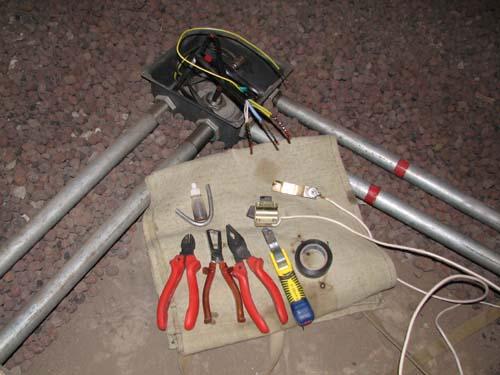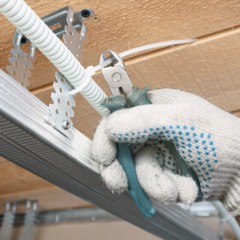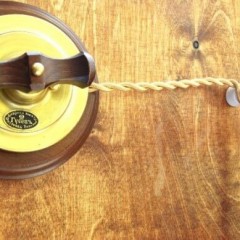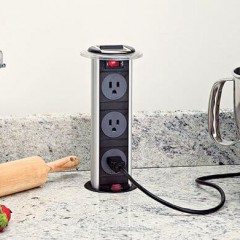Recommendations for wiring in pipes
The advantage of this option
The advantage of wiring in metal and PVC pipes is as follows:
- The electrical wiring is reliably protected from mechanical damage and adverse weather conditions (if the electrical network is installed on the street).
- Performed PUE Clause 7.1.37 “Wiring in the premises should be interchangeable: hidden - in the channels of building structures, monolithic pipes; openly - in electrical skirting boards, boxes, etc. ". That is, you can replace the wiring without opening the wall sheathing, tying a new one to the old cable, for example.
- For electrical wiring in wooden houses, a number of PUE requirements are put forward, paragraph 15.15 and others in SP 256.1325800.2016 (this is an updated version of SP 31.110) and other regulatory documents on electrical installations and fire safety.
- When laying wiring underground will be provided protection of electrical wiring from rodentsas well as damage from solid objects contained in the ground.
As you can see, it is necessary to use this method of electrical installation for reasons of electrical and fire safety.
We recommend that you familiarize yourself with the points of the PUE, which were discussed above. Read paragraphs 2.1.58., 7.1.37., 7.1.38. Requirements for the method of laying and the type of pipes used are described in SP 31.110-2003 in paragraph 14.15, and updated in SP 256.1325800.2016 at 15.15.
How to make an electrical installation
In fact, it is not difficult to conduct electrical wiring in the pipes yourself, you just need to make the appropriate trunk and run the cable into it. Installation technology, in fact, as well as the conditions for using plastic or iron pipes, has its own characteristics, which we will talk about in more detail now.
In plastic
PVC pipes are recommended for use in electrical work on surfaces in an open way in compliance with the above requirements, as well as in concrete screed floors.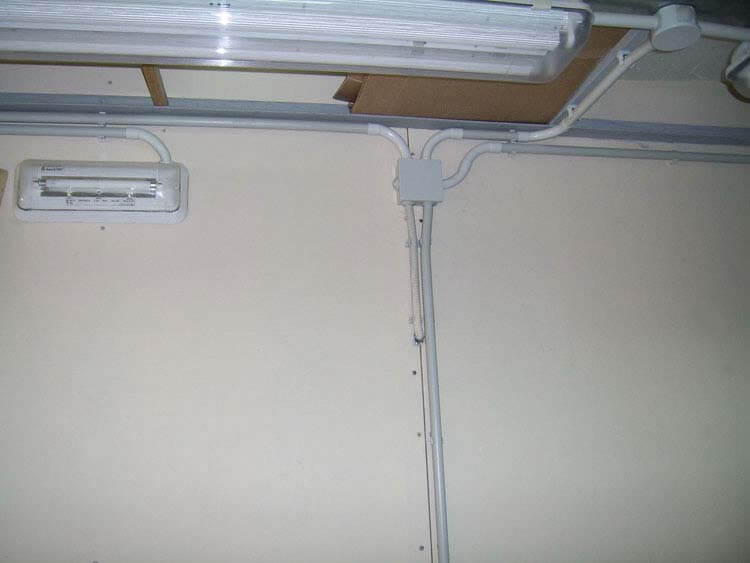
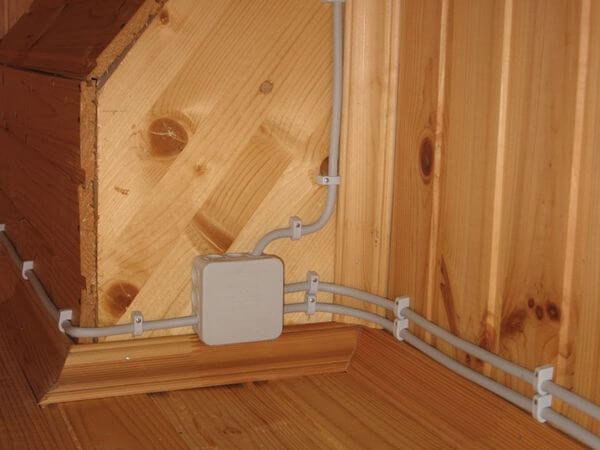
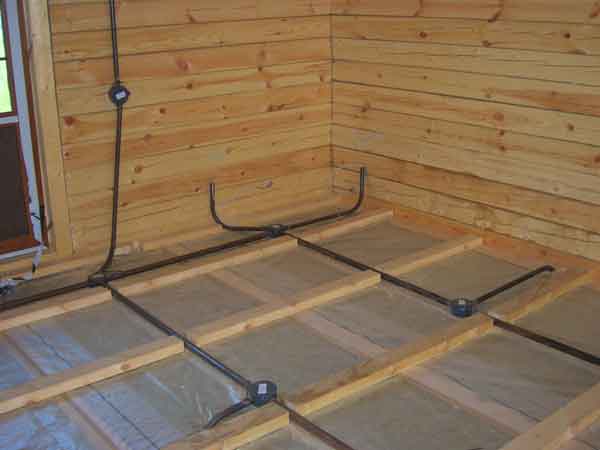
Cable laying technology consists of the following steps:
- According to the electrical circuit, the walls or floor are marked with a marker.
- Every 50 - 90 cm the line is attached to the surface with clips or brackets.
- The cable is drawn inward using special broaches - kapron or steel (wire).
- Pipes are connected to junction boxes (wire connection points) and to each other using a special soldering iron.
- If the installation is done in the floor, a concrete screed is poured over the finished track.By the way, it should be noted right away that with horizontal laying of the trunk, it is necessary to organize a slight bias towards the junction boxes to drain the condensate.
The requirements for electrical work are as follows:
- It is strictly forbidden to produce electrical wire connection in the pipes. All connections should be exclusively in the junction boxes, as recommended by clause PUE 2.1.26 (see Chapter 2.1)
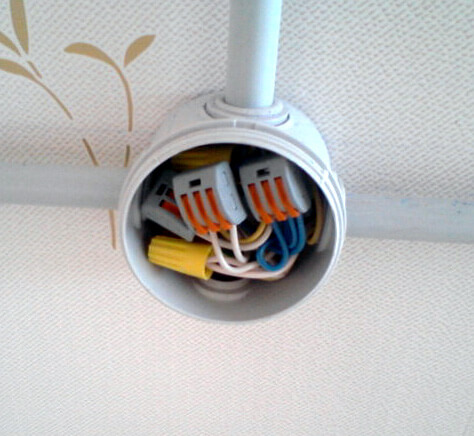
- Do not bend the track more than 90 degrees. Otherwise, you will not be able to replace the cable, because he will be caught in a bend.
- When installing electrical wiring in humid and fire hazardous areas, it is necessary to seal the junction of the elements, the junction with the junction box, and also make a tight entry.
- The minimum cross-section of the wire that will be drawn inside should be at least 1 mm.kv according to the PUE table. 2.1.1. «The smallest sections of conductive wires of wires and cables in electrical wiring».
In this case, you can use PVC / HDPE tubes, as well as corrugated - DCS, which are often used for installation of electrical wiring under drywall.
The video below clearly shows how to conduct wiring in PVC pipes:
In metal
An alternative solution is to use metal (both galvanized and iron) pipes for installation of hidden electrical wiring. This option is preferable if the cable needs to be laid in the ground or on a wooden surface, for example, when installation of electrical wiring in the bath.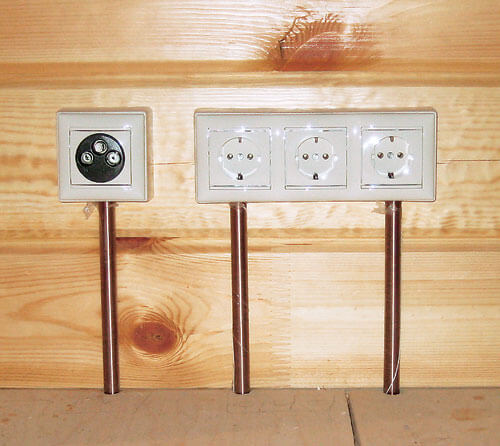
An instruction for laying a line with your own hands looks like this:
- As in the previous case, the pipes are laid according to the created drawing.
- To connect the elements using a welding machine or thread on both sides.
- Grounding of metal structures is carried out, as well as the organization of a bias towards the junction box.
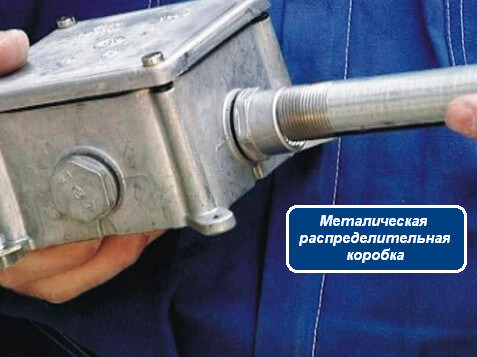
- The surface of the protective elements is painted to prevent corrosion.
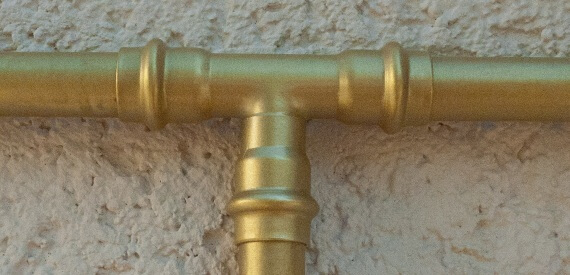
- The cable is drawn inward using a nylon pull or metal wire.
- The line is fastened every 50-90 cm with metal brackets.
The video below clearly shows how to conduct covert wiring in iron pipes in a wooden house:
Requirements for the installation of electrical wiring in iron pipes:
- If you decide carry out hidden wiring in the floor, then you should not paint metal elements, because this will impair the adhesion of the concrete to the metal.
- As for the kink, connecting the wires, sealing the joints and the minimum cross-section of the cores, everything remains the same as in the previous version.
- In order not to damage the insulation of the wiring at its exit to the surface, the ends of the steel tubes must be terminated with bushings.
- To quickly disassemble the line, it is recommended to avoid welding joints, make threaded joints.
- Copper pipes are connected by soldering to the expansion of one of the pipes or a larger diameter coupling. Steel can also be joined by welding.
That's the whole technology of laying electrical wiring in pipes with your own hands. As you can see, there is nothing complicated, the main thing is to take into account all the tips and act strictly on the basis of the installation technology provided. By the way, pipes can also be used to independentlymake retro wiring in the house. This option has proven itself in a very original way, as you can see by watching the video review, which examined open wiring in antique pipes:
Also read:

